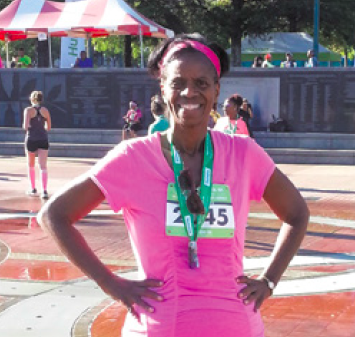East Cobb resident Carolyn Hampton just celebrated her 60th birthday three weeks ago. She doesn’t hide her age like some women, she celebrates it. That’s because she has never felt better.
Three years ago, Hampton’s life was very different. She suffered from overactive bladder, which is more common than diabetes or asthma. In fact, 37 million Americans suffer from overactive bladder. Hampton could not go to concerts, travel, or even sleep through the night. She would have to wake up every 45 minutes to urinate. She had always wanted to go New Year’s Eve celebrations but going an hour without a bathroom break was simply impossible.
Then Hampton finally said “Enough.” She went to a urologist who prescribed an advanced therapy that worked for her by addressing systemic issues within the communication systems between the bladder and brain. Hampton was ultimately prescribed neuromodulation, which gently stimulates the nerves that control communication between the bladder and brain. Often when people have OAB, the communication between doctor and patient is difficult, too. To bridge this gap, the National Association For Continence (NAFC) has launched a new tool to help people get a clear idea of their symptoms and the impact so they can better communicate these concerns to their doctor. It also can help people find a local incontinence expert who can work to restore their bladder function.
“There are many effective OAB treatments, yet the majority of those suffering are untreated. Our goal is to help people discover the right option for them, but the first step is communication,” said Steven Gregg, Ph.D., Executive Director of the NAFC. ”The better your healthcare provider understands the impact of your symptoms, the better they can help find an effective treatment.”
Only one in eight Americans who have experienced loss of bladder control have been diagnosed and less than 33 percent of people with incontinence and OAB symptoms seek treatment. Many sufferers revolve their lives around their bladder, but often don’t realize how much they are doing to cope — mapping bathrooms, refraining from drinking, wearing dark clothing and avoiding socializing.
In a recent NAFC survey of 356 people experiencing bladder control issues, 66 percent of respondents said their urination issues affected their sleep. More than 50 percent also reported a loss of confidence. The survey results also showed bladder control issues had a serious impact on other important areas including travel, intimacy, and ability to be active. Among women who have not discussed OAB with a physician, embarrassment was a top reason cited, in addition to fear of being told it’s a natural part of aging and thinking nothing can be done. While many advanced therapies are available, less than five percent of respondents have ever heard of them. It’s critical that patients find an incontinence expert to helpfind the right solution for them.
With her new chapter, Hampton now has run four 5K races with another one coming up in September. This was unheard of before. She can sleep through the night for the first time in years.
“I’m thrilled that my doctor listened to me and helped me find an effective solution. It took courage to open up about what has been a ‘hush-hush’ issue, but the freedom it gave me means so much to me,” says Hampton.
Visit www.everydayfreedom.com/nafc to take the bladder control quiz, learn how to talk to your healthcare provider and find an incontinence expert in your area.
This article originally appeared in the EAST COBBER September 2016 Issue.







